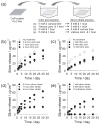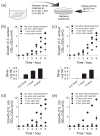Functionalizing calcium phosphate biomaterials with antibacterial silver particles
- PMID: 23184492
- PMCID: PMC4227400
- DOI: 10.1002/adma.201203370
Functionalizing calcium phosphate biomaterials with antibacterial silver particles
Figures







References
Publication types
MeSH terms
Substances
Grants and funding
LinkOut - more resources
Full Text Sources
Other Literature Sources
Medical

